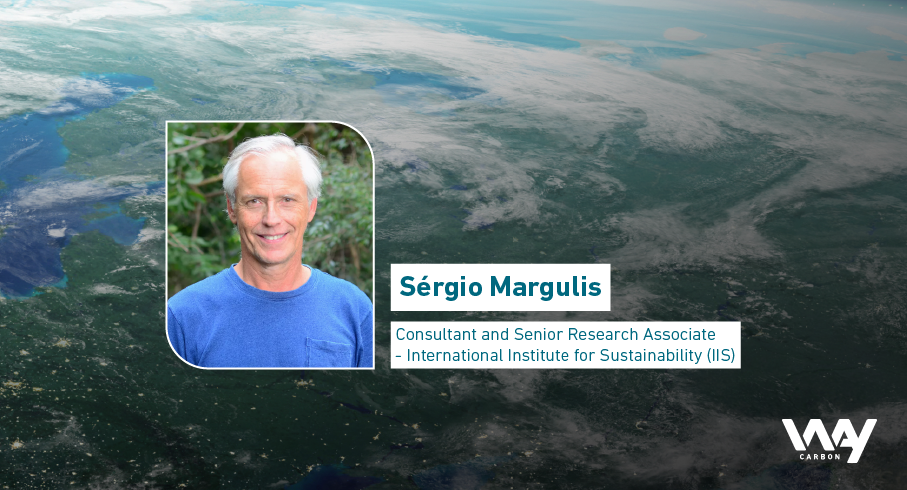Interview with Sergio Margulis: financing climate adaptation at COP28
We invited Sergio Margulis to talk about how climate finance for adaptation was dealt with at COP28, with a focus on risk analysis and adaptation measures. A mathematician with a PhD in environmental economics from Imperial College (London), Margulis was an environmental economist at the World Bank for over 20 years. He is currently a Consultant and Senior Research Associate at the International Institute for Sustainability (IIS) and has worked on several projects alongside WayCarbon.
1. How do you assess the results of the COP28 in terms of climate finance for government and business adaptation measures?
A: COP28 started with a surprise, an open discussion on an loss and damage investment fund which, actually, turned out to be quite insignificant. The funding commitments of financing were less than US$1 billion. Long before the Paris Agreement, estimates of adaptation finance needs exceeded US$100 billion per year.
According to the International Energy Agency’s Net Zero Roadmap, thanks to record growth in the clean energy sector, limiting global warming to 1.5°C above pre-industrial levels is still possible. However, to achieve this goal, investment would need to reach about US$4.5 trillion per year by 2030. Similar work by McKinsey estimates these investments at up to US$9 trillion per year! To move forward, the enormous costs of this transition must be imposed on wealthy countries and the private sector responsible for emissions.
We have a key issue of governance. For example, the National Police Chiefs’ Council (NPCC) lacks the power to penalize countries that fail to meet their net zero transition commitments. In fact, the entire United Nations Framework Convention on Climate Change (UNFCCC) system and COP agreements are adopted by unanimous consensus. Combined with the lack of sanctions, the COPs serve as a thermometer of the political-economic negotiation process, much more so than the negotiations themselves. The changes that matter are discussed in the G20, the World Trade Organization (WTO), and in national ministries of economics.
2. In your opinion, have we made progress in the aligning the agendas of developed and developing countries towards the transition to a low-carbon economy?
A: Unfortunately, I’m not optimistic. We have a declaration of good intentions, but we need to move forward on who is going to foot the bill to really address the challenges of the climate agenda. This is supposedly the agenda for the next COP – an agenda that is long overdue. We need commitments from wealthy country governments on how much will be invested, how, and over what timeframe. This could be developed in G20 meetings or similar economic forums that can be adapted to deal with the issue, with more limited participation from countries that are truly responsible for solving the problem – developed countries, oil producers, and a few others responsible for significant emissions, such as Brazil and India. Don’t forget that wealthy individuals and corporations will inevitably help pay the bill because they are also responsible for emissions, whether in rich or poor countries. Given the urgency of the climate problem, I believe the world needs a more “robust” mechanism with climate and finance targets that are subject to penalties for non-compliance.
3. What are the main challenges for companies and governments in implementing risk identification and operational adaptation measures?
A: Actually, countries, governments, companies and civil society need to know the risks they face. It’s only possible to talk about adaptation if we really identify those risks. So it’s a question of modeling. We have different scenarios around the world. Coastal regions have one set of concerns, cities have another, and industrial sectors have their specifics. For companies, it is important to look at their value chain. They need to understand the supply of raw materials and the needs of the market.
The big challenge is financing the implementation of adaptation measures. Global North countries are better prepared because of their existing infrastructure, while developing countries face the challenge of growing while remaining resilient. How will countries in the global South grow cleanly without rapid funding from rich countries? Once again, we didn’t see concrete commitments at COP28 on who will foot the bill. The technologies are on the table, and the science has shown what needs to be done. What’s missing is political will and determination. There’s a lot of money at stake.
We know that some companies are striving for net-zero but are still struggling to control their emissions, in some cases due to technological limitations, such as in the cement, chemicals, steel, and pulp and paper sectors. There’s a lot of work to be done. Let’s get on with it.





